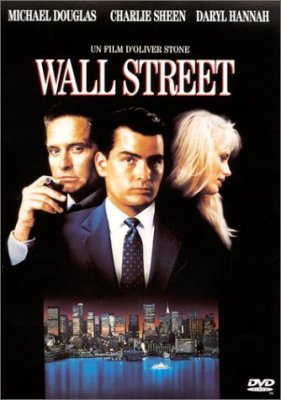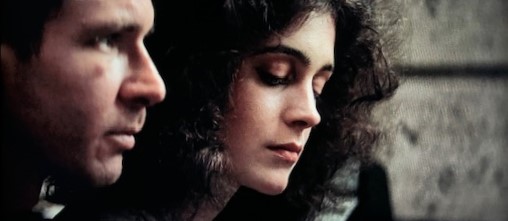
Harrison Ford needs some savings in his ‘Blade Runner’ retirement plan
Movies mark time. They are not “living documents.” But “Blade Runner” comes close. In 2007, Ridley Scott released an updated edition, “The Final Cut,” which Roger Ebert noted was Scott’s “fifth version.” That go-round, unlike the 1982 debut, cracked through Ebert’s skepticism to merit a place in his venerable “Great Movies” portal. Persistence pays off.
Whatever its flaws, Scott’s initial effort is a landmark work. It’s a cinematography class for the aspiring “modern” filmmaker. Digital signage, flying cars and extraordinary colors meet the “Citizen Kane” fixtures of smoke, rain, window shades. Topping it off are the most penetrating expressions by Harrison Ford — cynicism, fatigue, wonderment. Landing Ford, and several of the other cast members, is proof of Scott’s instincts.
The consensus seems to be that the drama underlying all these beautiful pictures is ... a little light. Gene Siskel (2½ stars) called the film “empty at its core,” Roger Ebert (3 stars) called it “a failure as a story,” and Pauline Kael bluntly writes that “what we see doesn’t mean anything to us.” They’re all correct.
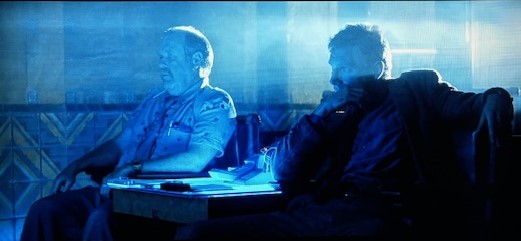
The title’s magnificent, though. “Blade Runner” is the movie version of a 1968 Philip Dick novel called Do Androids Dream of Electric Sheep? That description is a little clunky for a marquee. “Blade Runner” comes from an entirely different book, by Alan E. Nourse with an assist from William S. Burroughs.
The book’s journey to the screen took some twists and turns. Sometime around 1973, producer Herb Jaffe acquired the rights. Jaffe’s son Robert wrote a screenplay that Dick thought was so “crude” that it wasn’t the actual shooting script. Robert Jaffe flew to Orange County, and Dick greeted him with a sensational Hollywood quote: “I said to him then that it was so bad that I wanted to know if he wanted me to beat him up there at the airport or wait till we got to my apartment.” Apparently they had a discussion in which Dick explained his objections and offered several suggestions that Jaffe appeared to be writing down, only Dick discovered Jaffe was writing down nothing. “I realized then that there was a gulf between me and Hollywood,” Dick revealed.
Eventually, the project got in the hands of Ridley Scott. “Blade Runner” is among the handful of well-known films (“Pinocchio” and “AI” and “Barbie” and “The Wizard of Oz” and even “2001: A Space Odyssey” are others) blatantly suggesting the possibility of non-humans striving for human qualities as an endgame. But Hollywood has been doing it to us for ages. We know Dumbo and Bambi aren’t human, nor are R2-D2 and C-3PO. Hollywood, in film and TV, has even tried to convince us multiple times that cars are sort of human. That makes all of them no less powerful emotional figures. “Blade Runner” may also be an allegory about subjugation and tensions between different classes.
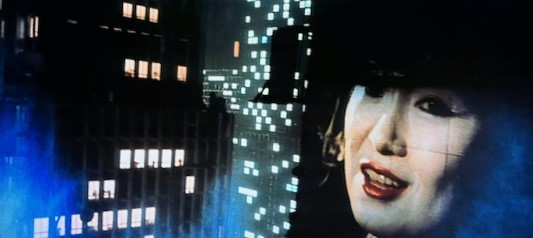
Perhaps the biggest decision by “Blade Runner” filmmakers is to depict an apparently post-apocalyptic world, set 37 years from the film’s release, without telling us why it’s a post-apocalyptic world. Or in other words, the biggest drama here has already occurred offscreen. That’s not totally distinct from “Vertigo,” which shows us in the opening scene the crisis that Jimmy Stewart experiences without telling us how he was saved. In “Blade Runner,” we have to take it at face value and dismiss it, the world is going to change mightily. We also have to take that concept at face value in “The Terminator,” except that “The Terminator” provides high drama in present-day 1980s L.A. and isn’t (really) about what happens later.
Pauline Kael notes that “Blade Runner” “Never asks, ‘How did this happen?’ The picture treats this grimy, retrograde future as a given. The presumption is that man is now fully realized as a spoiler of the earth.” Was this degradation the result of a cataclysmic event? Or a slow process of humans laying waste to their world? Roger Ebert in 2007 says that among the film’s “key legacies” are “giant global corporations, environmental decay, overcrowding, technological progress.” That “Blade Runner” is introducing one premise and telling us a story about a derivative of that premise is a filmmaking risk of expectation-setting, but not a fatal one.
What are the Replicants, who bear similarities to the trio sprung upon Earth in “Superman II” and have a David Bowie-like fascination with their bodies, doing that is such a menace to these people in Los Angeles? They are not murdering like Yul Brynner’s malfunctioning Gunslinger in Michael Crichton’s “Westworld.” Why, if the Replicants were sent to another world, are they even coming back here? Why can’t Tyrell easily identify them or, as Roger Ebert suggests, simply make them with four arms? The script suggests the Replicants just want the same answers about humanity as we all do, in particular, How much time do I got?, and that they only kill in self-defense, but given that they were created to self-destruct, anyone involved in making or policing them is fair game. Kael wonders why police wouldn’t just “wait for them to show up at Tyrell’s place” and why Deckard doesn’t realize that “all he’s doing is protecting Tyrell.”
A 2017 article about the film in Vanity Fair says that filmmakers upon completion were “certain” the movie was a masterpiece, and that among the collectively “tepid” reviews, it was the comments of Kael that “stung the most.”
Other shortcomings include the weaponry and lack of detective work. Kael asserts, “Deckard’s mission seems of no particular consequence. Whom is he trying to save?” Deckard appears to be handed one of the most humdrum of movie bounty hunter-type assignments. There is nothing clever or dramatic about how he finds the targets, nothing imaginative about how he evades or terminates them. The inspiration that fills the visuals is absent in the standard drama being depicted. Kael cracks, “If anybody comes around with a test to detect humanoids, maybe Ridley Scott and his associates should hide.”
The Replicants would have a better moral argument by taking a nonviolent approach and offering Tyrell a reason, and perhaps the equipment, for expanding their life span and/or capabilities. Or if, like characters in “Logan’s Run,” they simply ran away. Instead they indulge rather quickly in revenge. Tyrell put in the self-destruction; he seems too confident of his own ability to fend them off and not confident at all that his creation is actually a safe one.
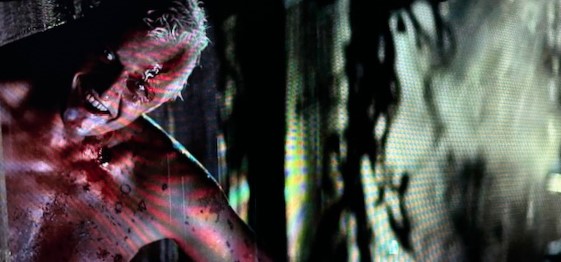
Though not a journey, Deckard’s assignment is not unlike that of Willard in “Apocalypse Now.” There’s a rogue community in our world, which became rogue as an offshoot of society’s decisions, and The Establishment deems it must be terminated, so a skeptical officer is recruited for the job and must be battered around for a bit by the fading mercurial — and not altogether bad — leader before accomplishing his goal. A big divergence is the woman — Deckard’s attraction to Rachael diverts his focus into a “Chinatown”-like rescue mission.
Coming 14 years after “2001,” “Blade Runner” has more electronic tools available for its look, which like “2001” breaks significant ground in its depiction of the detail of objects in the skies. Douglas Trumbull is the expert who worked on both films. In “Star Wars,” the spacecraft shoot each other up, but in “2001” and “Blade Runner,” cameras slowly pan as the airships float across the sky. It’s a fair argument that the visuals of “Blade Runner” promise so much that anything less than “Star Wars”-type of intergalactic blasting is a disappointment, that the “Blade Runner” story could’ve been done equally well set in plain old 1982 Los Angeles. Roger Ebert in his original review complains the movie “allows the special effects technology to overwhelm its story.” Gene Siskel writes that it’s a “simple story overpowered by the special effects and the set design” and carries “a lot of visual baggage.”
Scott and cinematographer Jordan Cronenweth employ a lot of the old standbys of noir. Cigarette smoke, light beaming in through shades (also used by Paul Schrader in “American Gigolo”), people identifying themselves with descriptions that may not be truthful; people looking over the ledges of tall buildings; people dangling from the ledges of tall buildings. It may be 2019, but Deckard is reading a print newspaper. One of the shootings is made operatic as the character Zhora, who is thrust upon us in one extended, bloody scene and ignored for the rest of the movie, plunges through glass, climbs to her feet, and smashes through more glass. We are constantly shown eyes, real and even fake, that seem to indicate one thing, only to sometimes show us something different.
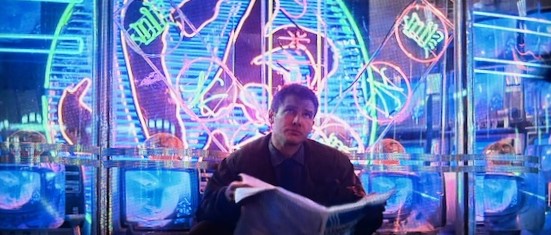
Dystopia appeals to filmmakers, perhaps because of its warnings, or perhaps because it’s a fun way of filming things in laboratories. It’s said that most people go to the movies for an escape, to be entertained; why they would be so intrigued by decaying societies is a good question. Despite its depressing, claustrophobic environment, “Blade Runner” is remarkably cleanly filmed. Everything is precision camerawork. A decade or two later, it would’ve been made with the insufferably jiggly hand-held camera to confirm to us that this is a low-budget, chaotic environment.
The environment, for reasons unexplained, is strongly Japanese-flavored. In American-made films, Japan represents several themes, including ancient martial arts, cheap but leading technology, formidable automotive competition, Wall Street investing, massive but extremely orderly urban compression. The Los Angeles of “Blade Runner” is awash in rain (do Oregon and Arizona in this world look the same?) and smog and tall buildings and appears to be taken over electronically. Are the visuals a statement on urban/suburban divergence, is there an implication that the bourgeoisie have fled for greener pastures (where Replicants are sent to work) and left the “inner city” to the masses? Kael writes that it seems the “clean-cut types” have bolted for “some Scarsdale in space.”
The box office yawned at “Blade Runner,” and the Oscars were not bowled over. It received two nominations: one for Visual Effects for Trumbull, Richard Yuricich and David Dryer (lost to “E.T.”) and another for Art Direction-Set Decoration (Lawrence G. Paull, David L. Snyder, Linda DeScenna), losing to “Gandhi.” What seems most slighted is the cinematography, as voters nominated “Gandhi” (the winner), “E.T.,” “Sophie’s Choice,” “Das Boot” and even “Tootsie.” The staying power of “Blade Runner” is evidenced not by gate receipts but its long-term following and collector interest. 1-sheet posters, designed by John Alvin, regularly fetch in the 3 digits, sometimes more depending on conditions. Tough-to-find inserts and other sizes and foreign variations can go for 4 figures; a 40” x 60” went for $3,200 in the summer of 2024.
There are long lists of things for a movie production to be concerned about. Unhappy authors are on those lists. The ending credits of “Blade Runner” include a tribute to Philip K. Dick. He died of a stroke just months before the film’s release. Dick did not have any rights over the film project, but he had previously complained about the script(s) and presumably could’ve established a bad narrative had he publicly carped about the film. According to Vanity Fair, the filmmakers regularly dispatched a publicist to Dick’s apartment to show him renderings and stills, and those plus eventually the opening scenes won Dick over. At least until his death. Ticket sales and critical response can shape opinions. Who knows whether Dick, by the end of the underwhelming box office run of “Blade Runner,” would’ve concluded that his material was well-presented.
The cast surrounding Ford is a bit of an ’80s all-star team. Rutger Hauer, who is probably most famous for his unique name, and M. Emmet Walsh, both perfectly cast, each working relentlessly forever. A very curious pair are Sean Young and Daryl Hannah, both of whom coincidentally appeared years later in “Wall Street.” Young got the bigger role in “Blade Runner.” The original script writer, Hampton Fancher, apparently envisioned his girlfriend, Barbara Hershey, getting that role, but Scott chose Young, whose photos reportedly “captivated” Dick, who asked to meet her, but the request was declined. By the time of “Wall Street” five years later, Hannah was a co-star, and Young was miscast with just a couple lines as Gekko’s wife.
Back to all of those versions. Numerous accounts exist online about the clash of wills over “Blade Runner.” Ridley Scott and Harrison Ford famously sparred with each other as well as with the suits. Artistically, Scott and Ford even still argue about whether Deckard is a Replicant. (Ford says he did not perceive the character as such.) (A June 1982 article about the film in the Chicago Tribune by Larry Karp says “Deckard is the only nonreplicant of any prominence or normality.”) Nothing seems to be as great a source of contention as the voiceover narration by Deckard, and not because he actually says the “N” word.
Harrison Ford and Ridley Scott on the set, in a Chicago Tribune article of June 20, 1982
Depending on which account you read/believe, Scott was initially open to the narration idea but discarded it. (He uses the even-more-of-a-crutch screen text to clue us in as the movie starts, and it’s text that reads like fine lit while an eager moviegoer would prefer Cliffs Notes.) According to Kael in 1982, the voiceover was “said to have been a late addition” and “sounds ludicrous.” Ebert writes in 2007 that “the biggest change Scott made in earlier versions was to drop the voice-over narration from the 1982 original. Spoken by Ford, channeling Philip Marlowe, it explained things on behalf of a studio nervous that we wouldn’t understand the film.” In a 2017 interview, Ford said he only agreed to do the film after Scott dropped the idea of voiceovers, and it was the studio, after the film’s completion, that ordered up the voiceovers, “four or five different versions, I think.” According to AFI research, Ford two days before the film’s release defended the narration and insisted it was always planned. He was asked by a reporter whether he liked the film and, in one of the great quotes that is not in the movie but should be associated with it, apparently responded, “That’s not a fair question.”
Scott likes it, but not enough of it. His creative battles extended (of course) to the curious ending, which originally featured a happy escape into nature (apparently with >unused helicopter footage from “The Shining” lent by Stanley Kubrick) and a voiceover about Rachael’s life span, only to be altered in subsequent releases. Anyone so inclined can watch all five or more versions and make their own call. There is something about a movie’s release that must be respected. Hollywood can make cars fly. It can’t really do a do-over.
3 stars
(October 2024)
“Blade Runner” (1982)
Starring
Harrison Ford as Deckard ♦
Sean Young as Rachael ♦
Rutger Hauer as Batty ♦
Edward James Olmos as Gaff ♦
M. Emmet Walsh as Bryant ♦
Daryl Hannah as Pris ♦
William Sanderson as Sebastian ♦
Brion James as Leon ♦
Joe Turkel as Tyrell ♦
Joanna Cassidy as Zhora ♦
James Hong as Chew ♦
Morgan Paull as Holden ♦
Kevin Thompson as Bear ♦
John Edward Allen as Kaiser ♦
Hy Pyke as Taffey Lewis ♦
Kimiko Hiroshige as Cambodian Lady ♦
Robert Okazaki as Sushi Master ♦
Carolyn DeMirjian as Saleslady
Directed by: Ridley Scott
Written by: Hampton Fancher (screenplay)
Written by: David Peoples (screenplay)
Written by: Philip K. Dick (novel)
Producer: Michael Deeley
Associate producer: Ivor Powell
Executive producer: Hampton Fancher
Executive producer: Brian Kelly
Music: Vangelis
Cinematography: Jordan Cronenweth
Editing: Terry Rawlings, Marsha Nakashima
Casting: Jane Feinberg, Mike Fenton
Production design: Lawrence G. Paull
Art direction: David Snyder
Set decoration: Linda DeScenna, Leslie Frankenheimer, Tom Roysden
Costumes: Michael Kaplan, Charles Knode
Makeup and hair: Shirley L. Padgett, Marvin G. Westmore, Brad Wilder, Michael Mills
Production manager: Alan Collis
Executive in charge of production: C.O. Erickson
Unit production manager: John W. Rogers
Stunts: Gary Combs
Thanks: William S. Burroughs, Alan E. Nourse “for the use of the title ‘Blade Runner’”
Dedicated to the memory of: Philip K. Dick

